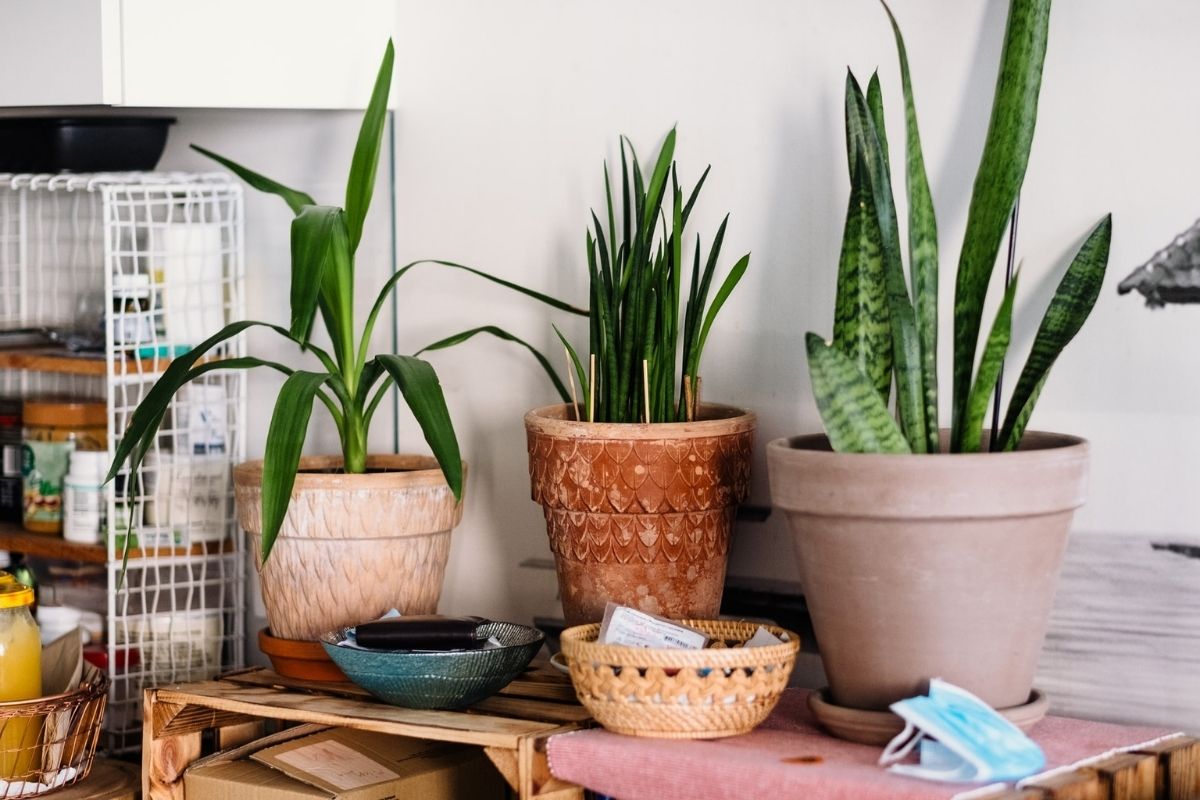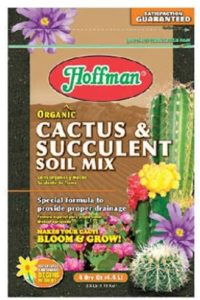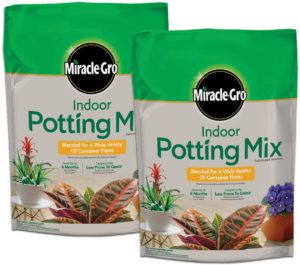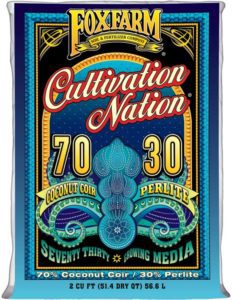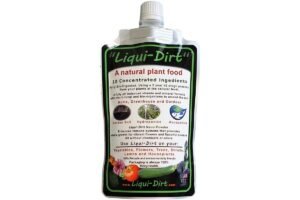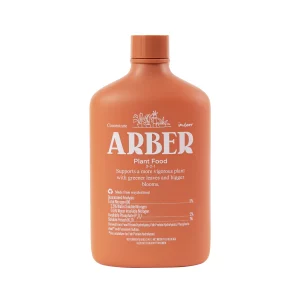The slender, dense blades of a snake plant (Dracaena trifasciata), endearingly called “mother in law’s tongue”, can grow up to several feet tall if you know which fertilizer to use. Choosing the best snake plant fertilizer isn’t quite as easy as it sounds though, let alone timing your plant feeding schedule to achieve the best results!
A year-round care schedule will keep your snake plant on track to achieving a healthy, mature size. But this isn’t a one-size-fits all routine, plant friends. The light and soil conditions your plant is in, as well as its size when you start, will affect the amount of fertilizer it needs.
Here’s everything you need to know about choosing a snake plant fertilizer and how to fertilize snake plants.
Signs Your Snake Plant Needs Fertilizer
Just like us, our green friends also show signs when they’re feeling a bit under the weather. Your snake plant is no exception. It’s a hardy plant, but it can still show signs of needing a little extra TLC in the form of fertilizer. Here’s what to look out for:
1. Slowed Growth
Snake plants are known for their steady, albeit slow, growth. However, if you notice that your plant has stopped producing new leaves during the growing season, it might be a sign that it needs a nutrient boost. Remember, slow growth doesn’t always mean your plant needs fertilizer. Other factors like infrequent watering, excess water, or low light conditions could also be the culprits.
2. Leaf Discoloration
If the vibrant green of your snake plant’s leaves is fading or turning yellow, it could be a sign of nutrient deficiency. While yellow leaves can also be a symptom of overwatering, if you’ve ruled that out, your plant might be telling you it’s time for some fertilizer.
A quick squeeze of the yellowing leaves or a poke at the soil surface will tell you whether or not the leaf discoloration is due to overwatering. Soft, mushy leaves and wet soil will be telltale signs of overwatering. If the moisture levels look otherwise “normal”, then it could be due to nutrient deficiency.
3. Leaf Curling or Wrinkling
Snake plants have sturdy, upright dark green leaves. If you notice them curling, wrinkling, or looking generally unhealthy, it might be a sign that your plant is lacking essential nutrients.
4. Stunted New Growth
New leaves that are smaller than usual can also be a sign that your snake plant is lacking nutrients. If the new growth seems stunted or deformed, consider giving your plant a dose of fertilizer.
Remember, every plant is unique and might show different signs of needing fertilizer. The best way to tell if your snake plant needs a nutrient boost is by observing it closely and responding to its needs. And when in doubt, remember that less is more. It’s better to under-fertilize than to overdo it and risk damaging your plant.
What to look for in a snake plant fertilizer
Native to the tropical climate of West Africa and South East Africa, snake plants are adapted, generally, to a pretty diverse range of soil nutrient profiles. This member of the Dracaena genus is actually a succulent, with long, thick leaves, no stem, and small, fibrous roots, and it doesn’t need a lot of water to stay healthy.
Snake plants store an above-average amount of moisture in its large leaves, which gives it good drought tolerance and means it’s one of the desirable few plants that don’t need much drainage to stay strong. Healthy, moisture-retaining leaves depend on nutrients in the soil, which you can supply to your snake plant on an annual schedule.
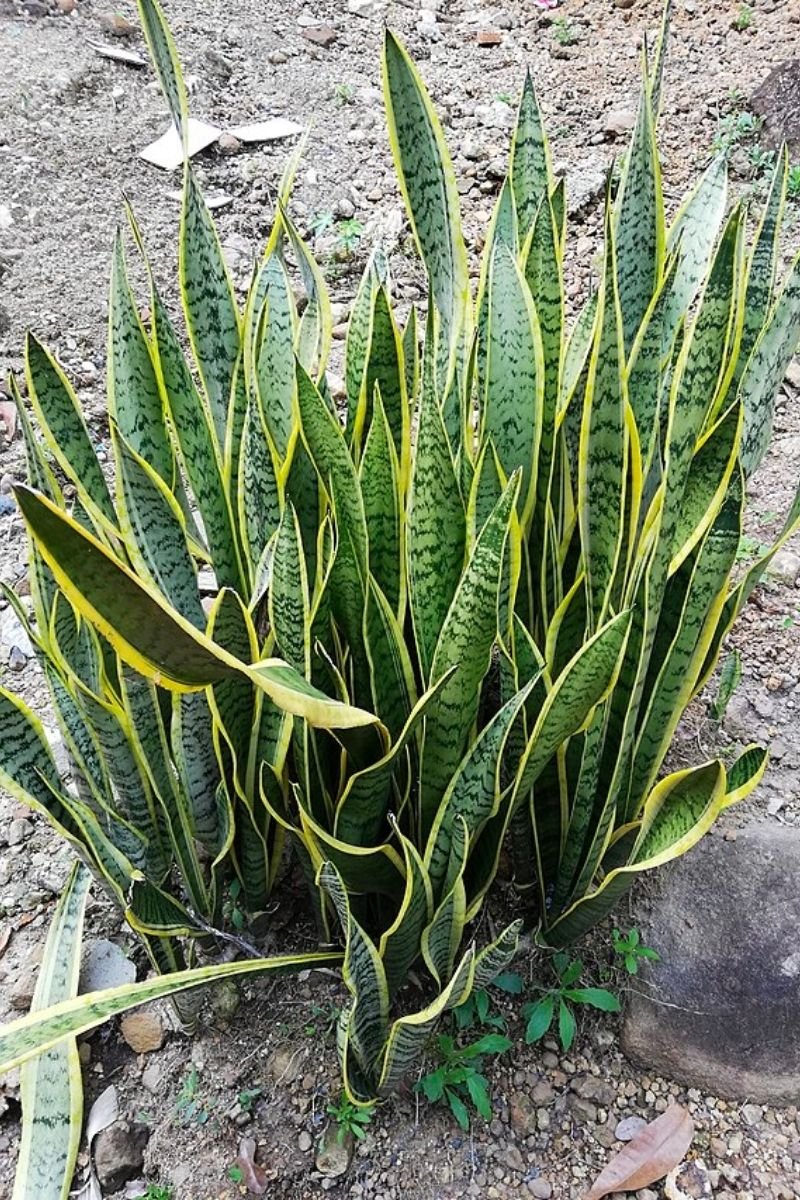
Snake plants will sip up the nutrients in their soil over time, so they appreciate a dose of fertilizer now and then. All-purpose nutrient mixes are great, especially indoor plant fertilizers specially formulated for domestic plant life! The snake plant needs all three of the NPK essential nutrients to support its growth.
- Nitrogen (N) is an essential component of chlorophyll, which the large leaves need to make a lot of to produce and store energy.
- Phosphorus (P) supports a snake plant’s roots and bud production, as well as general cell health.
- Potassium (K) helps plant cells retain moisture and regulate the leaf’s stomata, or breathing pores.

You’ll see these three primary nutrients displayed in a three number ratio on most houseplant fertilizer labels. You’ll want to look for a balanced fertilizer, but def nerd out on how to decode the NPK ratio for more advanced plant-alchemy 🤓
Snake plants are most grateful for a boost of fertilizer during its growing season (whenever it’s sunniest where you live in the world).
The size of the plant and speed of its growth will define how much fertilizer it needs. A tall snake plant that gets lots of bright, indirect light and grows quickly may like to be fertilized a few times a year, while a smaller snake plant in low to medium light that grows slowly only needs to be fertilized once in spring. In general, a little less fertilizer is better than too much.
Types of snake plant fertilizers
Don’t be confused by the powders, liquids, slow-release pebbles; fertilizer comes in many forms, and they each have advantages we’ll describe in this guide. Liquid, granular, synthetic, and organic fertilizers should be applied in different ways and in different quantities at a time based on your snake plant’s needs and the climate it’s chilling in.
Generally, snake plants are pretty low-maintenance when it comes to fertilizer, and will be happy with a dose once or twice a year. These are some of our favorites:
Good snake plant soil
Okay, this isn’t exactly a fertilizer BUT healthy, fresh soil will be packed with nutrients that are easily absorbed by the snake plant’s roots. Soil’s nutrients can deplete over time as the plant uses the vital nutrients to grow throughout the year. If it’s been over a year or so since you repotted your snake plant, then give that a try first.
Good soil does more than just provide a place for your plant to live. It delivers water, air, and nutrients to the roots, supports the plant physically, and offers a place for beneficial microbes to live. By ensuring your snake plant has the best soil possible, you’re setting it up for a long, healthy life.
Snake plants are pretty forgiving when it comes to soil types. However, they do have a preference for well-draining soil. This is because their roots, similar to those of succulents, can easily rot if they sit in water for too long.
A good soil mix for snake plants is one that retains some moisture but also drains well. You can achieve this by using a general-purpose potting soil mixed with some perlite or sand to improve drainage. Some indoor gardeners also like to add a bit of compost or worm castings to the mix for an extra nutrient boost.
Repotting Your Snake Plant
Repotting your snake plant not only gives it fresh soil packed with nutrients but also provides the opportunity to divide the plant if it’s getting too big for its pot. Here’s a simple step-by-step guide on how to do it:
- Remove the plant from its current pot: Be gentle during the process of removing the snake plant’s pot to avoid damaging the roots. If the plant is stuck, you can use a knife to loosen the soil around the edges of the pot.
- Inspect the roots: Before you place the plant in its new pot, take a moment to inspect the roots. If you see any that are mushy or smell bad, this could be a sign of root rot. Remove these roots with a clean pair of scissors.
- Prepare the new pot: Make sure the new pot has drainage holes. Cover the bottom with a layer of potting mix.
- Place the plant in the new pot: Position your snake plant in the center of the pot. Start filling around it with your soil mix, pressing gently to remove any air pockets.
- Water the plant: Once your snake plant is comfortably situated in its new home, give it a good drink of water. This will help the soil settle around the roots.
Snake plants prefer to be a bit root-bound, so no need rush to repot them too often. Doing it every 2-3 years is usually enough. You can throw a fresh layer on top of the snake plant’s soil to offer it a little boost without repotting it altogether.
Liquid fertilizers
Liquid fertilizers, usually synthetic fertilizers, isolate nutrients that are made to be available immediately to the plant roots. Liquid snake plant fertilizer is usually applied in diluted form by adding the recommended dose to your watering can throughout the growing season. A big plus with these fertilizers is that they’re easy to integrate into your normal watering schedule.
Depending on how often you water your snake plant, this can be a good choice if you’re a creature of routine and want to keep things simple. The snake plant’s small roots won’t be able to absorb a lot at once, so if you choose a liquid fertilizer, we recommend spreading out the recommended dosage over several applications for the most efficient nutrient absorption.
Synthetic fertilizers are a very concentrated liquid and should be diluted and applied multiple times over the growing season. No matter the form, choose a fertilizer labeled “all-purpose” to deliver the right nutrients to your snake plant. The best fertilizer for your snake plant pretty much depends on what’s most convenient for you!
If you would like a liquid synthetic fertilizer, then these are the best liquid fertilizer options on the market:
If you’re into organic fertilizers, then I really like Arber plant food, which is made from organic materials (AKA food waste) and is basically a packaged up homemade plant fertilizer:
Slow release fertilizers
Ever seen those little green or yellow balls in a bag of conventional potting soil and wondered if someone spilled a box of Wonka Nerds in there? Better than candy to plants and definitely worse for people (ha! 🤢 Don’t eat!!), slow release fertilizer comes in organic and conventional varieties and only needs to be applied to snake plants once a year.
Organic slow-release fertilizers include compounds that break down slowly over several weeks or months like worm castings, blood meal, fish-meal, and other unprocessed organic material.
You can also opt for the candy-colored balls, which some claim attract fewer pests. All slow-release fertilizers supply your plant with a steady release of nutrients that roots can absorb at their own pace as soil and light conditions change. Slow-release fertilizer should only be applied once or twice, depending on the plant.
Granular fertilizers
Granular fertilizers can be synthetic or organic solids designed for either quick-release or slow-release delivery. They can also be dissolved in water and added in liquid form, but most often, you’ll find products that instruct you to sprinkle in soil and then water directly after.
Granular fertilizers are concentrated, nutrient-dense, and stay in the soil longer than liquid formulas do. One advantage to granular fertilizers is that they’re easier and cheaper to transport than liquid fertilizers due to their concentrated form. You won’t need much of this type of fertilizer to get your snake plant glowing!
Here’s the best granular fertilizer for snake plants:
When to fertilize snake plants
Just as when you overwater your snake plant, you can run into trouble with too much fertilizer. How much is too much? With fertilizer, too much of a good thing can mean damaged roots, leaf burn, and potentially the end of your plant 💀
Snake plants absorb the macro- and micronutrients in potting soil, which need to be replenished from time to time, but it’s important not to apply fertilizer when your snake plant enters dormancy in the cold months. That’s like trying to feed a baby while it’s sleeping! Bad idea. In addition, keep in mind that:
❌ Too little fertilizer can result in stunted growth of the plant, at best, or yellow and/or limp leaves and weak roots at worst.
❌ Too much fertilizer, however, can damage your plant’s roots and cause leaf burn, so always measure and dilute your nutrients as directed.
Spring
The increasingly bright and warm days of spring coax snake plants out of their winter dormancy and stimulate growth in the plant. Spring is the best time to fertilize your snake plant since it is the most active growth period of the year as the plant reawakens and starts absorbing nutrients again.
Snake plants will appreciate a fertilizer that has a balanced NPK profile, using all the nutrients at this time of year: nitrogen for chlorophyll, phosphorus for strong root growth, and potassium for cell health and moisture retention. This is also the best time to apply slow-release or organic fertilizers, which will break down and become available over several weeks or months.
Summer / Fall
The warmer months are a period of regular growth for the snake plant. For larger plants, or those in lots of indirect sunlight, you can fertilize a couple of times during the growing season since the plant will be actively absorbing nutrients. Smaller snake plants, or those growing in low light conditions, don’t need more fertilizer following the spring application, and too much can be damaging to the plant.
Fertilizer can be applied up to the end of summer for large specimens, when the plant will begin absorbing less and less nutrients as fall progresses. The snake plant will start conserving its energy in fall to get through the upcoming period of winter dormancy.
Winter
Snake plants don’t need any fertilizer in the winter since they aren’t growing much at all during this time. The low light and low temperatures keep the plant in a dormant state, unable to produce as much chlorophyll as it does in brighter months. Like many other indoor plants, the snake plant is a warm-season grower that won’t do much during the short, dark, and cool days of winter.
How much fertilizer for snake plants
This tropical plant is used to a constant supply of nutrients from bioactive topsoil. Generally speaking, solid fertilizers only need to be applied once or twice a year, depending on the depletion rate by the plant. Liquid plant food can be applied more frequently during the growing season since it will be quickly absorbed and the remnants will drain more easily from the pot.
It’s easy to get excited when we fertilize snake plants… it sometimes feels like more, more, MORE! But excess fertilizer can lead to fertilizer burn, which is even sadder than nutrient deficiency. This is why dilute fertilizer doses!
Smaller doses at a time will help avoid over-fertilizing. Here’s exactly how much to fertilize your snake plant to avoid fertilizer burn.
Fertilizing Snake Plants in Different Containers
The type of container your snake plant is in can affect how much fertilizer it needs. For instance, snake plants in plastic containers may retain water and nutrients longer than those in terracotta pots, which are more porous and can leach out nutrients faster. So, snake plants in terracotta pots may require more frequent fertilization. However, always be cautious and avoid over-fertilization as it can lead to root burn.
Fertilizing Snake Plants of Different Sizes
The size of your snake plant also plays a role in fertilization. Larger, more mature snake plants may require more fertilizer compared to smaller, younger plants. A good rule of thumb is to apply a balanced, slow-release fertilizer with an NPK ratio of 10-10-10, or a similar balanced ratio, according to the manufacturer’s instructions. Remember, over-fertilization can cause the plant to become leggy or damage the root ball.
Fertilizing Snake Plants in Different Light Conditions
Light conditions significantly influence the fertilization needs of your snake plant. Plants in darker corners don’t need to be fertilized as often because they aren’t using up nutrients very fast. Conversely, plants receiving too much sunlight will need more frequent fertilization. If your plant is in a brighter location and receiving full sun, it may need to be fertilized every 3 months. Medium-light plants only need fertilization a couple of times a year, ideally in early Spring and late Summer.
Fertilizing Snake Plants in Different Climates
Climate can also affect the fertilization needs of your snake plant. In warmer climates or during the warmer months, snake plants may grow more and thus require more nutrients. However, during the winter months, it’s best to reduce fertilization as the plant’s growth slows down. Always consider the growing conditions and adjust your fertilization schedule accordingly.
Remember, the key to successful fertilization is to understand your snake plant’s specific needs based on its size, light conditions, container type, and climate.
Final Thoughts
I just went through allllll of the different options for you to fertilize your snake plant, including fertilizer options and a feeding schedule depending on where you live. In the end, the best fertilizer for snake plant comes down to what is easiest for you! Read through our snake plant care guide for more details about overwatering a snake plant, underwatering a snake plant, and how to solve snake plant root rot.
More about fertilizing
- 10 Best Worm Composter Bins For Easy Homemade Compost
- Compost Starter 101: When You Need It And How To Make It
- Our top pothos fertilizer picks for luscious vines
- 5 reasons to use coffee as fertilizer for your plants
- Best fertilizer for Monstera plants for gorgeous leaves
- Fertilizer Burn on Plants? Here’s How to Fix it
- Fiddle leaf fig fertilizer: How to feed your fiddle leaf

